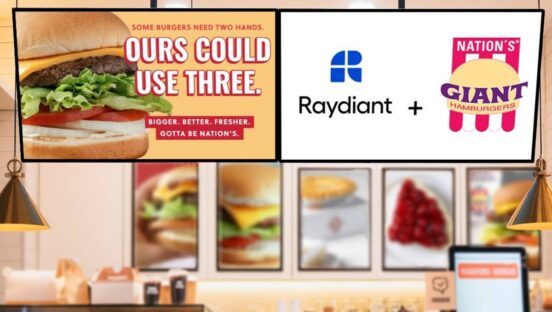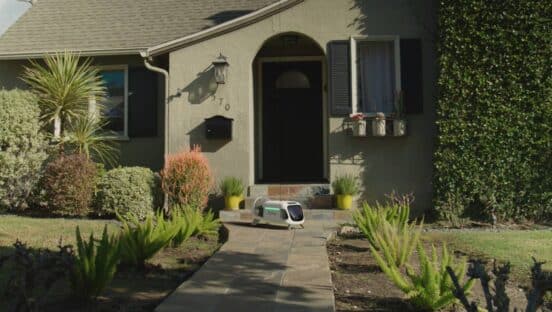From its earliest days, the quick-service restaurant industry has been a leader in the innovation of hospitality. As people have continuously become more mobile, and set tighter schedules for themselves, the quick-serve world has kept pace through technologies that improve the guest experience. Further, the economics of quick service—and the expectation of the guest to get great value for their dollar—makes improving back-of-house efficiency and effectiveness critical to ongoing financial success.
With the proliferation of the Internet of Things (IoT) in the residential market, consumers have become increasingly aware of the potential benefits they could be receiving in the commercial space. Luckily, there are several developments that have made commercial IoT more affordable and accessible. In turn, this makes for an extremely interesting time for quick-service restaurants-focused technology.
Especially of note are commercial IoT applications using device tracking and sensing. As this use of the technology has become increasingly more affordable and precise, there are opportunities to introduce a truly new level of customer experience and operational efficiency. Kiosk, online or mobile ordering systems and customer location tracking—using tableside beacons or mobile devices—improve order accuracy, reduce customer wait times and improves engagement with branded mobile applications. In turn, ticket sizes increase, and customer loyalty improves. Meanwhile, the back-of-house can realize improved employee schedules, time logging, and asset tracking – such as the monitoring of inventory quantity and freshness.
These IoT applications bring with them the promise of improved revenues. However, they are also fraught with risk and complexity. Security of the Internet of Things has been a constant discussion in the residential space due to breaches that compromise data and turn devices into malicious actors. The corporate space simply cannot afford for such incidents to take place.
Further, introducing multiple access points—each for different IoT devices and applications – quickly becomes challenging at scale. Introducing just a single IoT application at the scale of a restaurant chain requires precise execution for both secure connectivity and edge computing. And make no mistake, that “edge” capability is paramount. It provides the computing power necessary to facilitate data processing near the source. This allows for IoT tasks to execute with nearly no delay and can reduce network traffic to avoid congestion and data charges if connected via cellular.
Developing an IoT solution in-house can be costly. Ensuring it is executed precisely is both complex and risky. It is the combination of these factors—the complexity, risk, connectivity and cost—that have historically slowed the adoption of such systems in the quick-service space.
However, a secure and scalable edge architecture model has drastically lowered the barrier to access. Edge-capable wireless gateways, which bring IoT applications on to a single access point, are now affordably available at scale. These provide the required compute power for IoT while also connecting devices to cloud providers quickly and securely.
The development of Bluetooth 5, especially the low energy version (BLE) is especially intriguing for quick-serves as it offers robust tracking and monitoring capabilities while also sharing a Bluetooth infrastructure that exists on nearly every consumer grade mobile device. BLE has also reached a point where the connectivity of devices is extremely cost effective. This means sensors, asset tags, and other devices are also affordably deployed at scale.
Here are a few instances where the quick-service restaurant industry is seeing success as a result of this innovative merger of edge capable IoT gateways and BLE tracking and sensing capabilities.
Customer Location Tracking
The largest consumer-facing impact of tracking capabilities comes with the introduction of a location platform that can pinpoint a customer sitting in a restaurant or in a parking stall outside. Utilizing a BLE beacon within a table order number tent—or by connecting to a customer’s phone—allows for precise and efficient tableside or curbside delivery.
This capability benefits quick-serves in many ways, depending on the size and scope of the facility. All locations will see a benefit in the ability for consumers to order on their mobile device, sit anywhere within the restaurant—or pull up to the restaurant and remain in their car – and have the food delivered directly to them. This eliminates the crowded waiting area near the point of sale as well as the need for customers to return to a counter when an order is ready. It can also reduce the time spent sitting in a long drive-through line, idling and inching forward.
For those working on a larger scope—everything from restaurants with ample outdoor seating to those located within sporting arenas – this technology becomes critical for enhancing customer experience. The ability to remotely order and have food accurately delivered to a customer – or ready to pick up when they arrive—is a huge advantage in improving customer satisfaction.
The ability to offer this service also provides the benefit of increasing customer interaction with a brand as those ordering spend more time within the brand’s mobile application. Having food options more easily laid out in front of customers has proven to lift sales numbers through increased ticket sizes and improve order accuracy.
Asset Tracking and Monitoring
At the back-of-house, food items can be monitored and an alert can be sent when supplies are running low. In some instances, the ordering of new supplies can be automated through the correct IoT integration. Perishable items benefit greatly from such an IoT application as proper ordering algorithms ensure minimal food waste. If an item does expire, the correct monitoring can also ensure it is immediately discarded and not used by mistake.
Cold chain monitoring can also be implemented. Thanks to the lower cost of BLE devices this monitoring can exist far beyond just refrigerators and freezers. With sensors on individual containers there is the opportunity for complete transparency into how long an ingredient is left outside of a temperature-controlled area. Alarms can also be set to alert staff that an item is reaching a dangerous temperature.
Equipment monitoring can be implemented in kitchen appliances, point-of-sale systems and other critical devices. If a malfunction is detected, or a device may need maintenance soon, alerts can be set up to avoid trouble before is occurs—and potentially costs a restaurant sales.
Operational Efficiencies and Additional Systems
Reaching further into the back-of-house are capabilities to track employee time and location. This allows for insights into when an employee performs certain tasks and how long these tasks may take. The result is a better scheduling system, improved time logging, and a prioritization of tasks that benefit both operations and customer service.
Other benefits from this type of system can include increased security and safety measures that benefit staff while they are on the job, as well as better team coordination and communication.
That said, IoT deployments within a quick-service restaurant also won’t always fall to tracking and sensing. Other systems such as kiosk ordering, lighting and music options, pay-at-table services, digital signage, restroom maintenance, and more can also be powered by IoT applications. However, to keep your facility from suffering through costly infrastructural sprawl caused by dozens of access points for each application, you must find a way to bring it all together.
Partnerships Are Key
Dealing with a mix of indoor and outdoor spaces, security concerns over very public infrastructure, and the combining of multiple devices, sensors, beacons and tags into a single integrated system, requires both a manufacturing partner and a software partner.
Quick-serves should look to an edge infrastructure partner that understands the applications being run in the hospitality space and who can unify them onto a single, secure gateway. Software and application providers should be able to integrate with these edge gateways through the common Bluetooth technology that is necessary in hospitality.
There is etreme value in the flexibility of running multiple applications through a single access point. It not only provides a reduction in cost and complexity, but also allows for more effective security. An “as-a-service” subscription model with a single hardware vendor ensures security is consistently updated by the manufacturer. It also guarantees devices are replaced if they fail and ensures that scalability is easily addressed as a quick-service restaurant grows.
When seeking a hardware partner, it is important to ensure it has considered both the digital and physical security of a device. Stopping someone from gaining information from a device removed from a wall is just as important as thwarting digital attacks.
It is these partnerships that truly enable commercial IoT. They empower business owners by making sophisticated systems more easily accessible, deployable and manageable. The result for quick-serves is more efficient operations, happier customers, and an increase in profit for the business.












